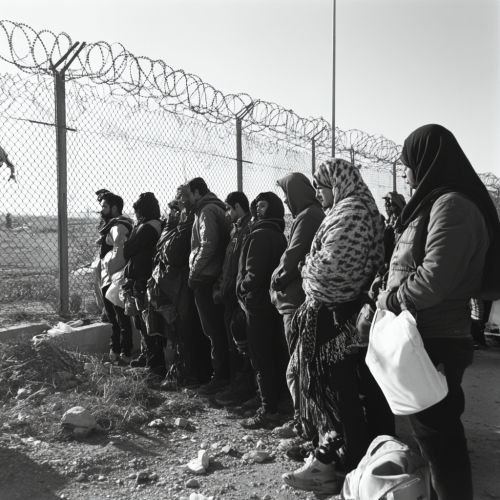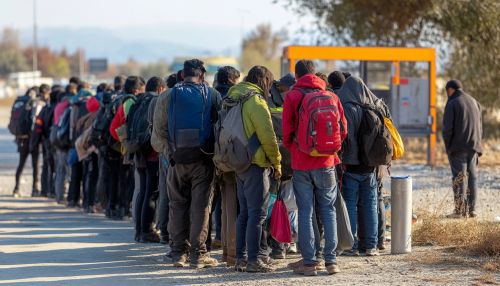Common European Asylum System: Difference between revisions
(Created page with "== Introduction == The Common European Asylum System (CEAS) is a framework established by the European Union (EU) to ensure that asylum seekers are treated fairly and consistently across member states. The system aims to harmonize asylum procedures, standards, and rights, thereby creating a unified approach to asylum within the EU. This comprehensive article delves into the intricacies of CEAS, its legal foundations, operational mechanisms, challenges, and future prospec...") |
No edit summary |
||
| Line 20: | Line 20: | ||
The EURODAC Regulation establishes a Europe-wide fingerprint database for asylum seekers and certain categories of illegal immigrants. This system helps to identify individuals who have previously applied for asylum in another EU member state. | The EURODAC Regulation establishes a Europe-wide fingerprint database for asylum seekers and certain categories of illegal immigrants. This system helps to identify individuals who have previously applied for asylum in another EU member state. | ||
[[Image:Detail-97859.jpg|thumb|center|Group of asylum seekers waiting at a border checkpoint.|class=only_on_mobile]] | |||
[[Image:Detail-97860.jpg|thumb|center|Group of asylum seekers waiting at a border checkpoint.|class=only_on_desktop]] | |||
== Operational Mechanisms == | == Operational Mechanisms == | ||
Latest revision as of 06:56, 3 September 2024
Introduction
The Common European Asylum System (CEAS) is a framework established by the European Union (EU) to ensure that asylum seekers are treated fairly and consistently across member states. The system aims to harmonize asylum procedures, standards, and rights, thereby creating a unified approach to asylum within the EU. This comprehensive article delves into the intricacies of CEAS, its legal foundations, operational mechanisms, challenges, and future prospects.
Legal Foundations
The legal framework of the Common European Asylum System is rooted in several key legislative instruments, which include:
Dublin Regulation
The Dublin Regulation determines the EU member state responsible for examining an asylum application. The primary objective is to prevent multiple asylum claims by the same individual in different member states and to ensure that one member state takes responsibility for each asylum seeker.
Asylum Procedures Directive
The Asylum Procedures Directive sets out common procedures for granting and withdrawing international protection. It aims to ensure fair and efficient asylum processes across the EU, including the right to a personal interview and legal assistance.
Reception Conditions Directive
The Reception Conditions Directive establishes minimum standards for the reception of asylum seekers. It covers aspects such as housing, food, healthcare, and employment, ensuring that asylum seekers have access to dignified living conditions while their applications are processed.
Qualification Directive
The Qualification Directive defines who qualifies for international protection and the rights associated with such status. It distinguishes between refugees and beneficiaries of subsidiary protection, providing a clear framework for their treatment and rights.
EURODAC Regulation
The EURODAC Regulation establishes a Europe-wide fingerprint database for asylum seekers and certain categories of illegal immigrants. This system helps to identify individuals who have previously applied for asylum in another EU member state.


Operational Mechanisms
The CEAS operates through a combination of centralized and decentralized mechanisms, involving various EU institutions and member states.
European Asylum Support Office (EASO)
The European Asylum Support Office (EASO) plays a crucial role in the implementation of CEAS. EASO provides technical and operational support to member states, facilitates the exchange of information, and assists in the development of common training programs for asylum officials.
Asylum, Migration and Integration Fund (AMIF)
The Asylum, Migration and Integration Fund (AMIF) provides financial resources to support the implementation of CEAS. It aims to enhance the efficiency of asylum systems, improve reception conditions, and promote the integration of beneficiaries of international protection.
Hotspot Approach
The hotspot approach is a mechanism designed to manage high influxes of migrants at the EU's external borders. It involves the deployment of EU agencies, such as EASO, Frontex, and Europol, to assist frontline member states in processing asylum applications and managing border controls.
Challenges
Despite its comprehensive framework, the Common European Asylum System faces several challenges:
Uneven Implementation
The implementation of CEAS varies significantly across member states, leading to disparities in asylum procedures and reception conditions. This uneven implementation undermines the principle of solidarity and burden-sharing among member states.
Overburdened Asylum Systems
Certain member states, particularly those at the EU's external borders, face disproportionate pressure due to high numbers of asylum seekers. This overburdening can lead to delays in processing applications and inadequate reception conditions.
Secondary Movements
Secondary movements refer to the phenomenon of asylum seekers moving from one member state to another after lodging their initial application. This creates challenges for the Dublin Regulation and complicates the management of asylum claims.
Legal and Procedural Complexities
The legal and procedural complexities of CEAS can create barriers for asylum seekers in accessing their rights. Issues such as lengthy procedures, limited access to legal assistance, and varying interpretations of EU directives can impact the fairness and efficiency of the asylum process.
Future Prospects
The future of the Common European Asylum System is shaped by ongoing reforms and proposals aimed at addressing its challenges and enhancing its effectiveness.
New Pact on Migration and Asylum
The European Commission's New Pact on Migration and Asylum, proposed in 2020, seeks to overhaul CEAS. Key elements of the pact include a new mechanism for solidarity and responsibility-sharing, streamlined asylum procedures, and enhanced cooperation with third countries.
Reform of the Dublin Regulation
Reforming the Dublin Regulation is a central aspect of the New Pact. The proposed changes aim to create a fairer system for determining the member state responsible for examining asylum applications, with a focus on solidarity and burden-sharing.
Strengthening EASO
The transformation of EASO into a fully-fledged EU Agency for Asylum is another significant development. This reform aims to enhance EASO's operational capacity, enabling it to provide more robust support to member states and improve the overall functioning of CEAS.
Enhancing Reception Conditions
Improving reception conditions for asylum seekers remains a priority. Efforts are underway to ensure that all member states adhere to the standards set out in the Reception Conditions Directive, thereby providing dignified living conditions for asylum seekers across the EU.
